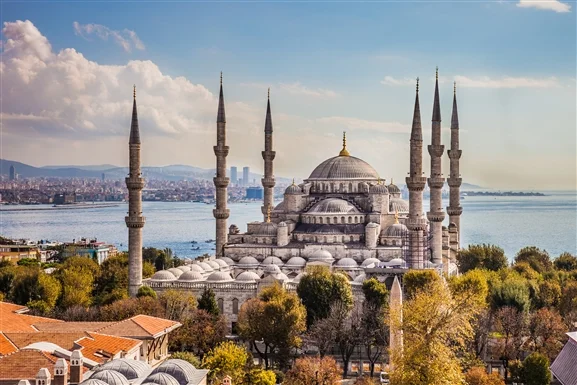Welcome to Istanbul, Türkiye — one of the most enchanting cities in the world, where continents collide and cultures converge. Stretching across Europe and Asia, Istanbul is a living mosaic of history, religion, and modern energy. This former capital of the Byzantine and Ottoman empires is home to breathtaking architecture, rich traditions, and a cuisine that’s as diverse as its people.
Whether you’re wandering ancient streets in Sultanahmet, enjoying the breeze on a Bosphorus cruise, or shopping in centuries-old bazaars, every experience in Istanbul feels timeless. The city’s unique position along the Bosphorus Strait makes it a geographical and cultural bridge between East and West — a place where ancient minarets rise beside modern cafés, and where every corner has a story to tell.
This Istanbul, Türkiye travel guide will walk you through the best of what the city offers — from historic sites and local flavors to travel tips and hidden gems.
Sultanahmet: The Historic Core of Istanbul

Sultanahmet is Istanbul’s historic epicenter, home to the most iconic landmarks in the city. This UNESCO-listed district showcases the city’s rich Byzantine and Ottoman heritage through its legendary architecture and spiritual monuments.
Hagia Sophia (Ayasofya)
Originally built in 537 AD by Byzantine Emperor Justinian I, Hagia Sophia has served as a cathedral, mosque, museum, and, as of 2020, a mosque again. Its massive dome (31 meters across) was an architectural revolution of its time and still awes visitors today. Inside, you’ll find Christian mosaics alongside Islamic calligraphy, symbolizing centuries of religious transition. Hagia Sophia’s layered identity makes it one of the most spiritually and architecturally significant buildings in the world.
Blue Mosque (Sultan Ahmed Mosque)
Facing Hagia Sophia is the equally impressive Blue Mosque, named for the 20,000 hand-painted blue Iznik tiles adorning its interior. Built in the early 1600s, it features six minarets and a grand courtyard, reflecting the height of Ottoman architecture. As an active place of worship, it’s important to dress modestly and respect prayer times when visiting.
Together, these monuments represent the heart of Istanbul’s religious and cultural heritage, offering visitors a powerful glimpse into the city’s past.
The Grand Bazaar and Spice Bazaar: Istanbul’s Ancient Marketplaces
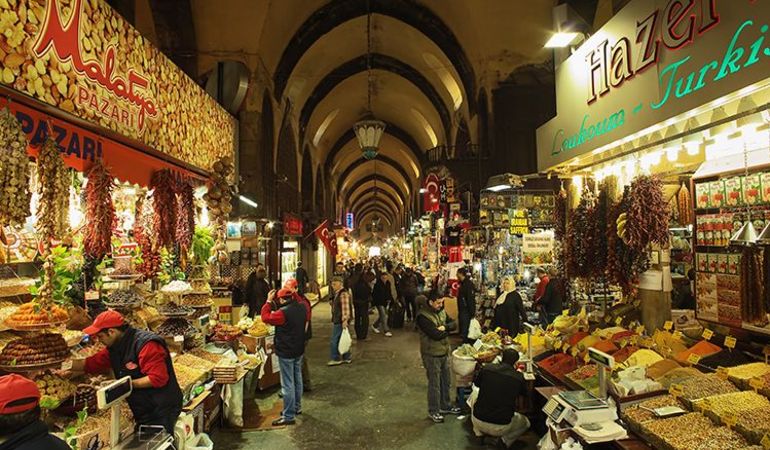
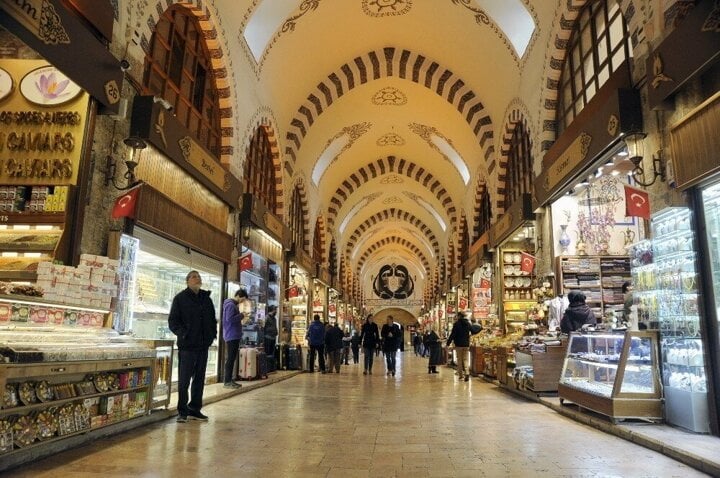
For centuries, Istanbul has been a key trade hub connecting Asia and Europe — and nowhere is that legacy more alive than in its bustling markets.
Grand Bazaar (Kapalıçarşı)
Dating back to the 15th century, the Grand Bazaar is one of the oldest and largest covered markets in the world. With over 4,000 shops lining 60 streets, it’s a vibrant maze of colors, scents, and sounds. Here you’ll find:
- Handwoven carpets
- Turkish lamps and ceramics
- Gold jewelry
- Leather goods
- Spices, sweets, and souvenirs
Bargaining is not only accepted — it’s expected. Engage in friendly negotiation with shopkeepers over a cup of Turkish tea. Whether you’re buying or browsing, the bazaar provides an authentic taste of Istanbul’s trading tradition.
Spice Bazaar (Mısır Çarşısı)
Just a short walk from the Grand Bazaar is the Spice Bazaar, where the air is thick with aromas of saffron, cinnamon, dried fruit, and Turkish delight. Built in the 17th century, this bazaar was once part of the New Mosque complex and remains a favorite for locals and tourists alike.
These markets are not just shopping destinations — they are cultural experiences that immerse you in the rhythm of Istanbul’s daily life.
Bosphorus: The Waterway That Shapes the City
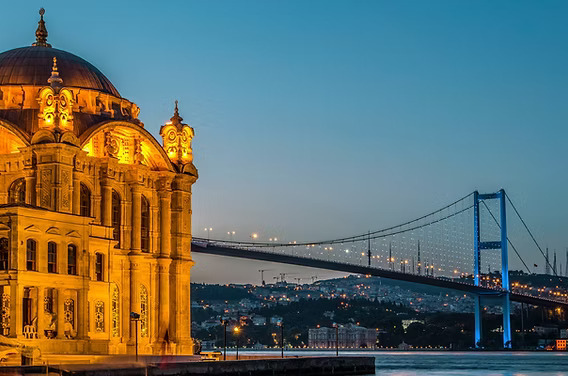
The Bosphorus Strait is the heartbeat of Istanbul, separating the city into European and Asian halves while also uniting it with breathtaking beauty. It’s more than a geographic divider — it’s a vital part of Istanbul’s soul.
Why Take a Bosphorus Cruise?
A Bosphorus cruise offers a panoramic view of Istanbul’s grandeur from the water. As you glide past, you’ll see:
- Ottoman Palaces like Dolmabahçe, Çırağan, and Beylerbeyi
- Traditional yalıs (wooden waterfront mansions)
- Mosques with domes rising over the hills
- Iconic bridges like the Bosphorus Bridge
Opt for a sunset cruise for golden hour views, or take a ferry to Üsküdar or Kadıköy for a local experience on the Asian side. These districts are quieter, more authentic, and full of scenic seaside charm.
The Bosphorus is also ideal for photography and reflection — a tranquil escape from the urban bustle and a powerful reminder of Istanbul’s unique geography.
Culinary Istanbul: A Blend of Flavors from East and West
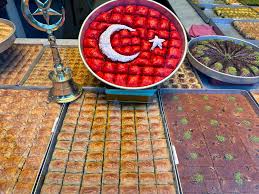
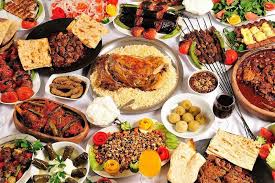
Food in Istanbul is a celebration. Influenced by Ottoman palace cuisine and regional Anatolian dishes, Turkish food offers something for every taste.
What to Eat in Istanbul
- Simit: Sesame-covered circular bread sold on every corner — best enjoyed with tea
- Meze: A variety of small dishes like hummus, haydari, and grilled eggplant served before main courses
- Kebabs: From juicy lamb shish to spicy Adana kebab, grilled meats are staples
- Köfte: Turkish meatballs served with bread or pilaf
- Lahmacun: A thin flatbread topped with minced meat, herbs, and spices — often called “Turkish pizza”
- Baklava: A sweet, flaky dessert made of layers of filo pastry and pistachios soaked in syrup
Pair your meal with Turkish tea or try çay bahçesi (tea gardens) near the Bosphorus for a local vibe. Istanbul’s food scene also includes trendy cafes in Karaköy and Moda, traditional meyhanes (taverns), and bustling street vendors.
Eating in Istanbul is more than satisfying your hunger — it’s one of the best ways to experience the culture.
Hidden Gems: Exploring Istanbul Beyond the Guidebooks
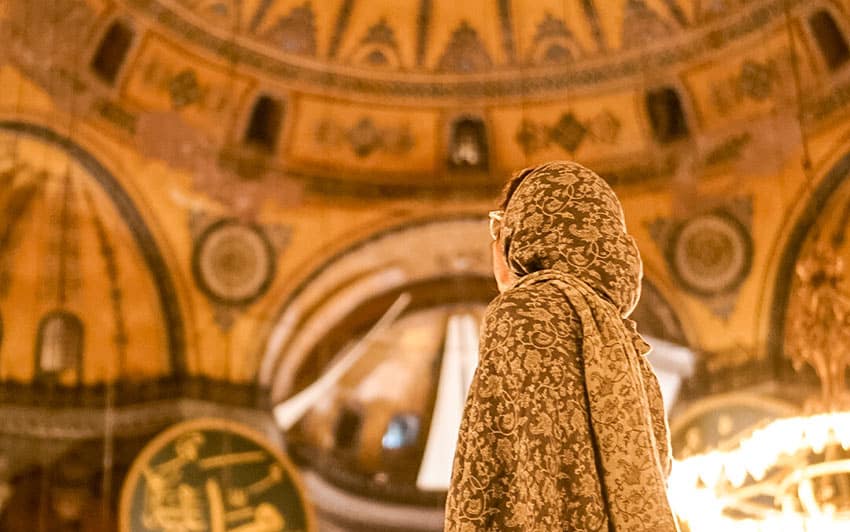
Istanbul’s magic lies not only in its famous landmarks but also in the stories hidden within its lesser-known streets.
Balat & Fener
Once home to Greek, Armenian, and Jewish communities, Balat and Fener are now colorful neighborhoods full of character. Wander through streets lined with painted wooden houses, vintage shops, art studios, and cozy cafes. These areas offer a quieter, more authentic look at local life, far from the usual tourist trail.
Pierre Loti Hill
Located in the Eyüp district, Pierre Loti Café offers one of the best views of the Golden Horn. Named after a French novelist who fell in love with Istanbul, it’s reachable by cable car or a scenic walk and makes for a peaceful afternoon.
Princes’ Islands
A short ferry ride from the city, the Princes’ Islands (especially Büyükada) are car-free and full of pine forests, horse-drawn carriages, and Ottoman mansions. It’s the perfect spot for a day trip to escape the city’s hustle.
These places offer the perfect mix of history, beauty, and calm — essential parts of the complete Istanbul experience.
Essential Travel Tips for Visiting Istanbul
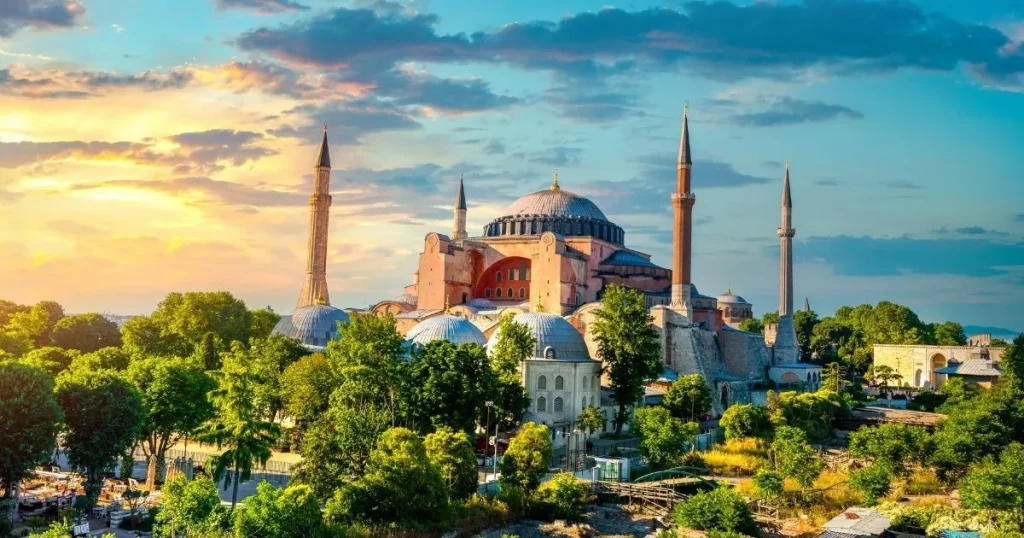

To get the most out of your trip, it’s important to plan ahead. Here are a few practical tips for visiting Istanbul:
Best Time to Visit
- Spring (April–June) and Fall (September–November) are ideal with mild weather and fewer crowds.
- Summer can be hot and crowded, especially in tourist-heavy areas.
- Winter is chilly but offers lower prices and a quieter experience.
Getting Around
- Buy an Istanbulkart for easy access to trams, buses, metros, and ferries.
- Walking is the best way to explore Sultanahmet and nearby neighborhoods.
- Taxis are available but use apps like BiTaksi to avoid scams.
Cultural Etiquette
- Dress modestly when visiting mosques; women should carry a scarf.
- Remove shoes before entering mosques.
- Learn a few Turkish phrases — it goes a long way with locals.
Currency and Language
- Local currency is Turkish Lira (TRY).
- Credit cards are widely accepted, but carry cash for bazaars and small vendors.
- English is common in tourist areas, but signage is usually in Turkish.
Conclusion: Discover the Soul of Istanbul
Istanbul is more than a destination — it’s a journey through time and culture. With its stunning skyline of domes and minarets, fragrant bazaars, and welcoming people, the city captures the imagination like no other. Whether you’re cruising the Bosphorus, standing beneath the dome of Hagia Sophia, or sipping tea in a quiet alley, Istanbul makes you feel both small and deeply connected to history.
This Istanbul, Türkiye travel guide offers just a glimpse of all the beauty, flavor, and soul the city has to offer. Come for the landmarks, stay for the stories, and leave with memories that will stay with you forever.

